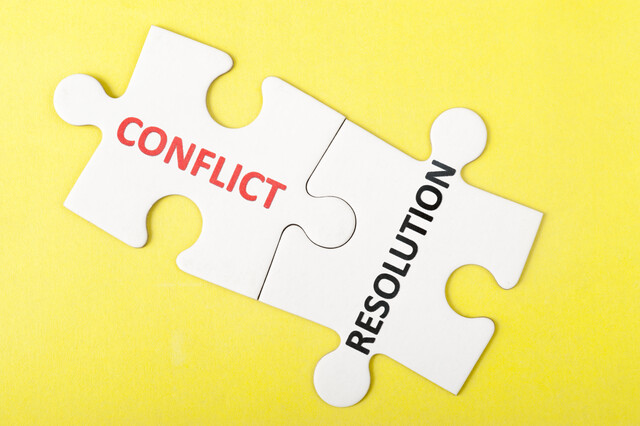Online Class: Child Abuse Recognition, Investigation, and Protection

no certificate
with CEU Certificate*
-
20Lessons
-
27Exams &
Assignments -
3,194Students
have taken this course -
12Hours
average time -
1.2CEUs
Course Description
Course Overview: Child Abuse Investigation & Prevention
In a world that is advancing rapidly, one of the most unfortunate yet pressing issues is the prevalence of child abuse. It is not just the responsibility of a select few but rather a collective duty of society to ensure the safety and well-being of its youngest members. Bringing awareness, education, and actionable measures to address this menace is crucial.
Course Description:
Dive deep into the complex and challenging arena of child abuse and its various facets, from identification to intervention. This course provides a comprehensive insight into the myriad forms of child maltreatment, ranging from neglect to physical and sexual abuse. Not limited to just identifying the problem, this course underscores the importance of proactive prevention and the role each individual can play in safeguarding a child's well-being.
With the distressing statistic that [current child abuse statistics], the need for educated professionals and aware citizens is paramount. This course addresses that gap, equipping learners with the skills to recognize, report, and ultimately prevent instances of child abuse.
The curriculum delves into the psychology of abusers, providing a detailed profile to assist in early identification. By understanding the tell-tale signs of abuse, individuals are better placed to intervene and prevent further harm.
Legal aspects surrounding child abuse are intricate. A strong emphasis is laid on understanding the legal obligations of different professionals, especially in terms of reporting abuse. Law enforcement's role in these cases is dissected, from initiating investigations to ensuring evidence holds up in court. Special sessions focus on best practices for interviewing young victims, confronting suspects, and ensuring the child's overall safety.
Furthermore, the course sheds light on specific conditions, like Munchausen Syndrome by Proxy, that often go unnoticed due to their complex nature. Case studies are presented, allowing learners to apply their knowledge in real-life scenarios, thereby solidifying their understanding.
Highlights:
-
Defining Abuse: Understand the broader spectrum of what constitutes abuse and neglect.
-
Spotting the Signs: From physical marks to behavioral changes, become adept at recognizing the indicators of maltreatment.
-
Legal Boundaries: Grasp the legal responsibilities, particularly those of professionals, in reporting abuse.
-
Investigative Techniques: Dive into the methodologies employed by law enforcement during child abuse investigations.
-
Protection and Prevention: While intervention is vital, the ultimate goal is to foster environments where children are safe and nurtured.
Course Modules:
-
Lesson 1: Introduction to Child Abuse Investigation: Setting the stage for the course and establishing its importance.
-
Lesson 2-3: Profiling abusers and defining the spectrum of abuse.
-
Lesson 4-5: Recognizing and assessing signs of abuse.
-
Lesson 6: A deep dive into conditions like Munchausen Syndrome by Proxy.
-
Lesson 7-9: Understanding the legal landscape, from mandatory reporting to law enforcement procedures.
-
Lesson 10-13: Investigative processes, from crime scene analysis to confronting suspects.
-
Lesson 14-15: Special focus on crime scene investigations and the tragic outcomes of severe abuse.
-
Lesson 16-17: The role of educators in child protection and best practices for interviewing parents.
-
Lesson 18-19: Legal procedures in sexual abuse and physical abuse/homicide cases.
-
Lesson 20: Ensuring long-term safety and protection for children post-investigation.
Why Enroll?
This course is a blend of theoretical knowledge and practical skills, making it invaluable for professionals and general public alike. Whether you're a law enforcement officer, educator, healthcare professional, or a concerned citizen, this course empowers you to make a tangible difference in the life of a vulnerable child.
Join us in our mission to create safer communities for our children. Equip yourself with the knowledge and tools to not only spot but to stop child abuse in its tracks.
- Completely Online
- Self-Paced
- Printable Lessons
- Full HD Video

- 6 Months to Complete
- 24/7 Availability
- Start Anytime
- PC & Mac Compatible
- Android & iOS Friendly
- Accredited CEUs

Course Lessons
Lesson 1. Recognizing and Reporting Child Abuse
Child abuse knows no boundaries, affecting children across race, gender, and socio-economic status, with neglect emerging as the most prevalent form. Increased reporting since the 1970s indicates growing awareness, emphasizing the importance of community vigilance and legal reforms.Lesson 2. Breaking the Cycle: Strategies in Combating Child Abuse
Female abusers, often overlooked due to societal stereotypes, account for a significant portion of abuse cases and may collaborate with male abusers. Recognizing their role in the cycle of abuse is vital for comprehensive intervention strategies.Lesson 3. Child Protection: Beyond Awareness
Neglect, the most reported form of child maltreatment, demands differentiation from poverty-related challenges, pushing the need for societal support rather than just parental blame. Understanding this nuance can better direct interventions towards providing essential services and support systems to affected families.Lesson 4. Identifying Key Indicators of Child Abuse
Emotional manifestations of abuse, like anxiety and depression, often reflect deep-seated trauma from the child's experiences, requiring attentive care and intervention. Recognizing these signs as coping mechanisms highlights the resilience of children and underscores the need for compassionate support systems.Lesson 5. From Recognizing Indicators to Ensuring Safety: Comprehensive Guide on Child Abuse
Unexplained or severe injuries can signal abuse, demanding careful examination of the injury’s shape, location, and severity. Such assessments are vital to recognizing whether these injuries result from accidents or indicative of an abusive environment.Lesson 6. Munchausen Syndrome by Proxy: An In-Depth Guide
Key to understanding MSBP is recognizing caregivers' excessive need for attention, often resulting in unnecessary medical procedures for the child. An early detection system involving cross-institutional sharing of medical records could help expose patterns indicative of MSBP.Lesson 7. Who Must Report Suspected Child Abuse?
Mandatory reporting laws broadened over the decades by including various professionals who interact with children, emphasizing the collaborative effort needed to protect vulnerable kids. Although each report is important, anonymous options can increase the number of reports but also complicate investigations.Lesson 8. Safeguarding Whistleblowers: Legal Shields for Reporters
Failure to report child abuse is treated as a criminal offense, with serious penalties including fines and imprisonment. Legal frameworks empower individuals to report abuse, protecting them from retaliation and ensuring their anonymity in appropriate circumstances.Lesson 9. Comprehensive Protocols for Child Abuse Investigation
Law enforcement agencies have crafted specialized protocols to tackle child abuse cases, ensuring prompt legal action and protecting victims from further trauma. Coordinated efforts between detectives, Child Protective Services, and other stakeholders prioritize both justice and the child's welfare.Lesson 10. Uncovering the Truth: Developmental Psychology in Child Interviews
Effective child interviews navigate the tension between gathering necessary information and maintaining the child's emotional well-being, employing child-friendly spaces and carefully considered questioning strategies. Integrating psychology and empathy underpins successful outcomes, ensuring the child's voice is central in legal proceedings against abuse or neglect.Lesson 11. Creating a Supportive Environment for Child Interviews
Tailoring interview guidelines to individual children's needs, including cultural and developmental factors, enhances the gathering of accurate information. Adaptive techniques like using visual aids or breaks cater to children's comprehension and emotional readiness.Lesson 12. Empathy and Evidence: The Dual Pillars of Child Abuse Investigations
In the intricate realm of child abuse investigations, utilizing forensic science and a multi-faceted strategy ensures evidence is robust and admissible in court. Beyond technicalities, the process is deeply rooted in supporting victims and maintaining ethical standards that safeguard their well-being.Lesson 13. Crafting the Path to Justice: Empathy and Technique in Child Abuse Interrogations
Law enforcement officers face the challenge of guiding suspects toward truthful confessions in child abuse cases, balancing skill and empathy while respecting suspects' constitutional rights. The ultimate goal is to protect children from trauma and ensure confessions adhere to strict legal standards.Lesson 14. Investigating Child Abuse: Legal Safeguards and Procedures
Upon reaching a crime scene involving potential child abuse, officers focus on urgent yet cautious measures to secure and preserve evidence. Legal protocols ensure that collected evidence stands up in court, often requiring consent or a warrant when deeper investigation is necessary.Lesson 15. Child Death Investigations: A Multi-Faceted Approach
Exploring the nuances of unexpected child fatalities, investigators focus on potential abuse indicators, with forensic pathologists at the forefront in confirming suspicious deaths. Simultaneously, community education programs seek to bolster awareness, promoting safer environments for children.Lesson 16. Empowering Educators: Strategies for Recognizing and Reporting Child Abuse
Despite mandatory reporting laws, teachers often hesitate to report suspected child abuse due to fears of retribution and inadequate proof of suspicion. Enhanced training and clear legal guidelines are essential to empower teachers to act decisively for the welfare of their students.Lesson 17. Strategic Dialogues: Unearthing Truth in Child Welfare Investigations
In child abuse cases, law enforcement navigates a careful path between necessity and compassion, while non-law enforcement individuals may contribute to revealing truths within community circles. Teachers face significant challenges deciding when to involve specialists without exacerbating situations, emphasizing the importance of proper intervention timings.Lesson 18. Navigating the Complexities of Sexual Child Abuse Charges
In sexual child abuse prosecutions, careful evidence assessment, often lacking definitive medical support, is crucial to determine charges and ensure legal protocols are followed. Prosecutors must address jurisdictional standards, victim sensitivity, and intricacies of offender-victim dynamics to effectively proceed with charges and aim for a conviction.Lesson 19. Felony Murder & Abusive Homicide Explained
Educating the public on legal complexities empowers communities to engage meaningfully with the justice system, fostering accountability and informed advocacy. Through grassroots movements and educational reforms, citizens are encouraged to actively participate in shaping a fair and compassionate legal landscape.Lesson 20. Proactive Advocacy for Child Welfare
Effective tackling of child abuse includes understanding signs, fostering communication, acting quickly on suspicions, and supporting recovery. By contributing to community and educational efforts, individuals can ensure a more responsive and conscientious society prioritizing child welfare.
Learning Outcomes
- Identify and describe the four main types of child abuse—physical, sexual, emotional, and neglect—by listing their respective indicators and signs.
- Recognize the historical context and evolution of child protection laws by summarizing significant milestones from ancient societies to modern legal frameworks.
- Define the diverse profiles of child abusers, identifying the common traits and behaviors that enable abuse regardless of socio-economic background.
- Outline strategies to recognize and combat child abuse, focusing on education, community support, and legislative measures to prevent neglect and exploitation.
- Demonstrate an understanding of the socioeconomic factors that contribute to child abuse and neglect and propose strategies to mitigate these influences within communities.
- Recognize and differentiate between the four main categories of child abuse: physical, sexual, emotional, and neglect, including their unique characteristics and potential indicators.
- Define and identify at least three behavioral, emotional, and physical indicators of child abuse that vary by developmental stage.
- Describe the impact of abuse on children by analyzing case scenarios and link specific behaviors to underlying abuse circumstances.
- Demonstrate the ability to report suspected child abuse appropriately by understanding the legal considerations and procedures for notifying relevant authorities.
- Identify and describe physical and behavioral indicators of child abuse, including bruising patterns, injury locations, and changes in behavior.
- Define Munchausen Syndrome by Proxy and identify key indicators of the condition, such as inconsistent medical narratives and frequent unexplained hospital visits.
- Recognize the psychological and social factors contributing to Munchausen Syndrome by Proxy and demonstrate strategies for early detection and intervention.
- Recognize and differentiate between the various forms of child abuse, including physical, emotional, sexual abuse, and neglect, based on specific indicators.
- Demonstrate mastery of lesson content at levels of 70% or higher.
Additional Course Information

- Document Your Lifelong Learning Achievements
- Earn an Official Certificate Documenting Course Hours and CEUs
- Verify Your Certificate with a Unique Serial Number Online
- View and Share Your Certificate Online or Download/Print as PDF
- Display Your Certificate on Your Resume and Promote Your Achievements Using Social Media

Choose Your Subscription Plan
No Certificate / No CEUs
This course only
| Includes certificate | X |
| Includes CEUs | X |
| Self-paced |

|
| Instructor support |

|
| Time to complete | 6 months |
| No. of courses | 1 course |
Certificate & CEUs
This course only
| Includes certificate |

|
| Includes CEUs |

|
| Self-paced |

|
| Instructor support |

|
| Time to complete | 6 months |
| No. of courses | 1 course |
Certificates & CEUs
Includes all 600+ courses
| Includes certificate |

|
| Includes CEUs |

|
| Self-paced |

|
| Instructor support |

|
| Time to complete | 12 Months |
| No. of courses | 600+ |
Certificates & CEUs
Includes all 600+ courses
| Includes certificate |

|
| Includes CEUs |

|
| Self-paced |

|
| Instructor support |

|
| Time to complete | 24 Months |
| No. of courses | 600+ |
Student Testimonials
- "This was a great refresher course for a teacher like me. The information was presented in an orderly manner and easy to follow. All objectives were clearly stated and discussed. Thank you!" -- Kasimira L.
- "I loved this course. Child abuse is a very hard subject for most but we need the education to help combat it." -- Stephanie M.
- "I learned so much more than I knew or could learn from TV shows. Thank you for creating the criteria and the materials on the subject of Child Abuse." -- Tara F.
- "I enjoyed this course although it made me sad. It is so hard to believe children have to go through so much pain, I know that they do." -- Anna W.
- "All the learning resources well organized and very helpful." -- Waisea T.
- "Excellent program, I look forward to learning more and being able to help those in need. Thanks." -- Kimberly B.
- "I enjoyed this course and do feel much more informed about child abuse." -- Savannah R.
- "The instructor was excellent, fast response, and gave excellent information." -- Bonnie H.
- "The course was very informative and enjoyable." -- Dany P.
- "Thank you for your quick response and nice comments." -- Cynthia M.
Related Courses
-
 9 hours
0.9 CEUs
Child Safety for Teachers
+ More Info
9 hours
0.9 CEUs
Child Safety for Teachers
+ More Info
-
 6 hours
0.6 CEUs
Virus Removal and Protection
+ More Info
6 hours
0.6 CEUs
Virus Removal and Protection
+ More Info
-
 7 hours
0.7 CEUs
Understanding Drug and Alcohol Abuse
+ More Info
7 hours
0.7 CEUs
Understanding Drug and Alcohol Abuse
+ More Info
-
 9 hours
0.9 CEUs
ABCs of Technical Writing
+ More Info
9 hours
0.9 CEUs
ABCs of Technical Writing
+ More Info
-
 5 hours
0.5 CEUs
Child Safety for Parents
+ More Info
5 hours
0.5 CEUs
Child Safety for Parents
+ More Info
-
 32 hours
3.2 CEUs
Accounting & Bookkeeping 101 for Everyone
+ More Info
32 hours
3.2 CEUs
Accounting & Bookkeeping 101 for Everyone
+ More Info






